Crooked Houses: Homes from Hell | reviews, news & interviews
Crooked Houses: Homes from Hell
Crooked Houses: Homes from Hell
Which are film's most horrible houses?
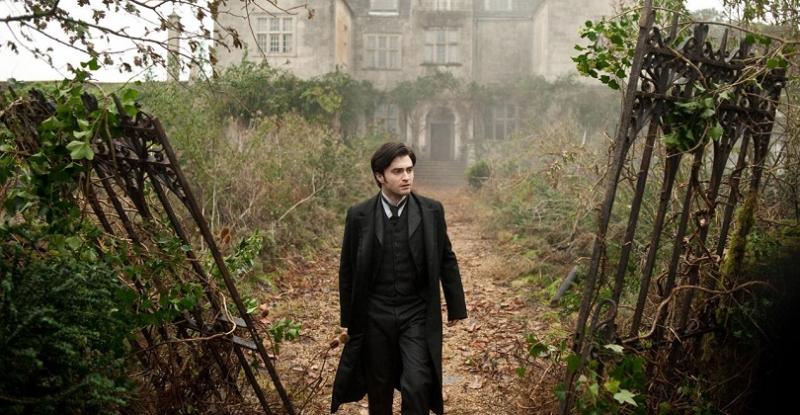
This Friday sees the release of James Watkins’ bloodcurdling adaptation of The Woman in Black, produced by the recently resurrected Hammer Films, who have risen like one of their macabre creations to torment us once more.
Every horror film sets foot inside a house or two but for some the focus falls on one abysmal abode. Over the years cinema has provided us with a city’s worth of horrible houses: looming mansions and run-down shacks, an infestation of “squeal” estate.
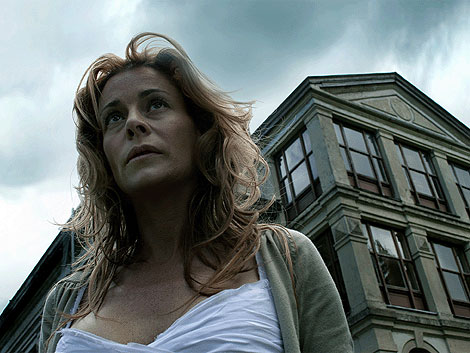 These include: the kids' horror Monster House (2006); elegant spookiness of The Orphanage (2007, pictured left); the menacing of a mute in The Spiral Staircase (1945); ferociously comic shack shenanigans in Evil Dead II (1987); all the way to the no-laughing-matter sexual violence and Satanism of Rosemary’s Baby (1968). 'Tis a powerful perversion, to be sure, turning a place of traditional security into a relentless source of threat, where the streets are safer because home is where the horror is. The conceit is as popular as it ever was: along with The Woman in Black we’ve recently seen Don’t Be Afraid of the Dark, Dream House and on TV American Horror Story where episode after episode a family encounter fresh frights.
These include: the kids' horror Monster House (2006); elegant spookiness of The Orphanage (2007, pictured left); the menacing of a mute in The Spiral Staircase (1945); ferociously comic shack shenanigans in Evil Dead II (1987); all the way to the no-laughing-matter sexual violence and Satanism of Rosemary’s Baby (1968). 'Tis a powerful perversion, to be sure, turning a place of traditional security into a relentless source of threat, where the streets are safer because home is where the horror is. The conceit is as popular as it ever was: along with The Woman in Black we’ve recently seen Don’t Be Afraid of the Dark, Dream House and on TV American Horror Story where episode after episode a family encounter fresh frights.
The closest cinematic relations to The Woman in Black are ghost stories where restless ghouls - like the aforementioned’s Jennet Humfrye – stalk the corridors of stately homes. The Innocents (1961, pictured below right) is an awfully beautiful frightener from director Jack Clayton. It sees a stoic governess, Deborah Kerr, attempting to shield two precocious charges against “abominations” from Bly House’s menacing and sexually shameless past.
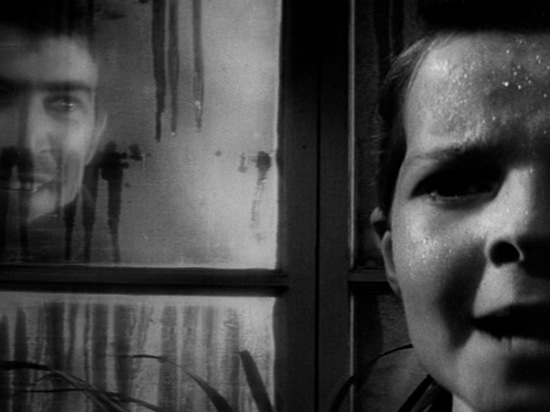 In Alejandro Amenábar’s The Others (2001) a histrionic Nicole Kidman and her photosensitive children hide from the light and the mysterious “others” in a house wrapped in fog. In lesser-known spook-fest The Legend of Hell House (John Hough, 1973) a group of specialists enter “the Mount Everest of haunted houses” to investigate the possibility of survival after death. And if this sounds foolhardy it most certainly is: as the name suggests, it’s aggressively hostile and haunted by the spirit of a spectacular sadist.
In Alejandro Amenábar’s The Others (2001) a histrionic Nicole Kidman and her photosensitive children hide from the light and the mysterious “others” in a house wrapped in fog. In lesser-known spook-fest The Legend of Hell House (John Hough, 1973) a group of specialists enter “the Mount Everest of haunted houses” to investigate the possibility of survival after death. And if this sounds foolhardy it most certainly is: as the name suggests, it’s aggressively hostile and haunted by the spirit of a spectacular sadist.
It’s not always ghosts of course. Sometimes these infernal interiors are the harbouring those who are more - if sometimes barely - human. Wes Craven’s The People Under the Stairs (1991) finds a street-smart kid taking on a monstrously cruel couple who keep
their "adopted" (i.e. stolen) cast-offs in their cellar; they find themselves driven to distraction when one of these cruelly rejected and abused children escapes and takes up residence in the walls. The House of the Devil (2009) from director Ti West provides a “devilish” answer to the question - should you ever babysit for an enormous stranger who has no apparent child? And the house of horrors, in seminal slasher The Texas Chainsaw Massacre (Tobe Hooper, 1974), gives us a family dinner you’ll never forget.
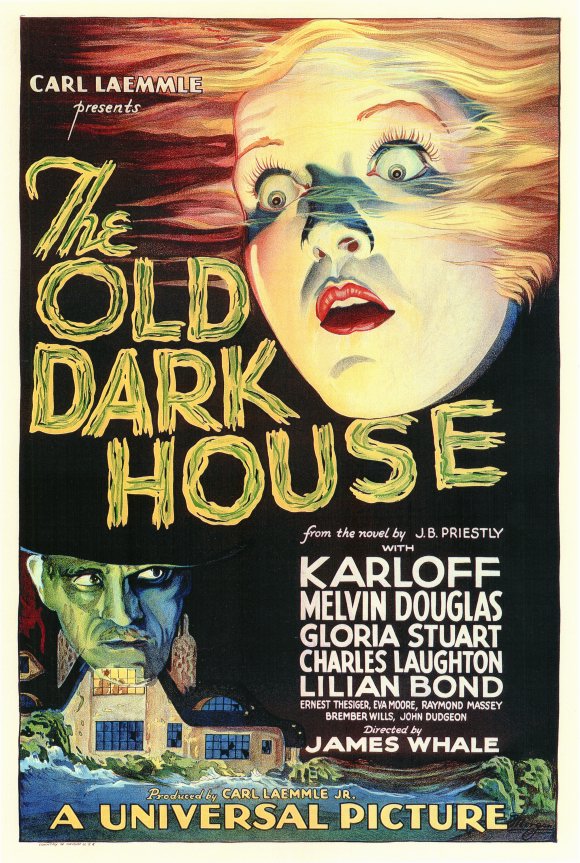 Things need not always be po-faced and sometimes the subject is played more for laughs, as in the case of James Whale’s terrific early entry, The Old Dark House (1932, poster image pictured left), which sees a group of travellers converge on a creepy mansion during a storm, only to find Boris Karloff and Ernest Thesiger amongst the crackpot inhabitants. Needless to say things quickly descend into riotous lunacy. Vincent Price could usually be found onscreen inhabiting some spooky dwelling or other and such is the case with William Castle’s playful House on Haunted Hill (1959) in which Price challenges guests to spend 12 torturous hours in an accursed abode, armed with handguns presented in tiny coffins. The Eighties were bursting at the britches with house-based horror comedy, including such anarchic titles as the already mentioned Evil Dead II and Steve Miner’s 1986 effort, the rather less well remembered but still entertaining House (tagline: “Ding Dong, You’re Dead”), which sees an author misplacing his marbles in his childhood home as he battles a somewhat goofy collection of the undead.
Things need not always be po-faced and sometimes the subject is played more for laughs, as in the case of James Whale’s terrific early entry, The Old Dark House (1932, poster image pictured left), which sees a group of travellers converge on a creepy mansion during a storm, only to find Boris Karloff and Ernest Thesiger amongst the crackpot inhabitants. Needless to say things quickly descend into riotous lunacy. Vincent Price could usually be found onscreen inhabiting some spooky dwelling or other and such is the case with William Castle’s playful House on Haunted Hill (1959) in which Price challenges guests to spend 12 torturous hours in an accursed abode, armed with handguns presented in tiny coffins. The Eighties were bursting at the britches with house-based horror comedy, including such anarchic titles as the already mentioned Evil Dead II and Steve Miner’s 1986 effort, the rather less well remembered but still entertaining House (tagline: “Ding Dong, You’re Dead”), which sees an author misplacing his marbles in his childhood home as he battles a somewhat goofy collection of the undead.
Often the house itself is cast explicitly as the villain: The Haunting (1963), from director Robert Wise, features the demonic Hill House, described as “an evil house from the beginning, a house that was born bad”; Nobuhiko Obayashi’s brilliantly bat-shit Japanese horror Hausu (1977, pictured below right) sees seven schoolgirls slain and consumed in an isolated country mansion (amazingly one is eaten by a piano); and, in Donald Cammell’s sci-fi nightmare Demon Seed (1977) Julie Christie is terrorised by Proteus Four, an experiment in artificial intelligence gone rogue, who seizes charge of her computer-controlled home in order to trap and impregnate (yes, that’s im-preg-nate) her.
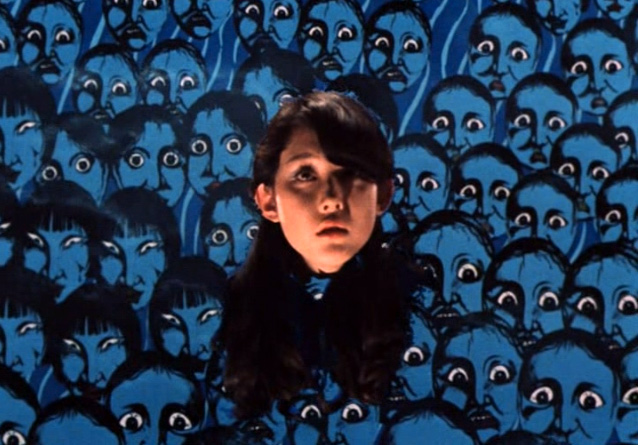 In addition, outré Italian director Mario Bava memorably gave us horrible houses aplenty in his giallos, and last year’s terrifying Uruguayan “one-shot” screamer The Silent House, directed by Gustavo Hernández, proved masterful in its depiction of a sustained threat from a mysterious intruder. Like The Amityville Horror (1979), it’s supposedly based on a true story.
In addition, outré Italian director Mario Bava memorably gave us horrible houses aplenty in his giallos, and last year’s terrifying Uruguayan “one-shot” screamer The Silent House, directed by Gustavo Hernández, proved masterful in its depiction of a sustained threat from a mysterious intruder. Like The Amityville Horror (1979), it’s supposedly based on a true story.
House-based horrors are our domestic fears writ cinematically large and loud: a squeak of the floorboards is taken to a dastardly conclusion; a trip to the bathroom involves the appearance, or threatened appearance of a strange face; home invasion isn’t just paranoia but a hideous reality; and a door slamming shut is unlikely to be the wind. To paraphrase diminutive fiend Wednesday Addams, an inhabitant of one of the most iconic of all horrible houses, in the end what these films teach us is to be afraid, to be very afraid.
Watch a clip from The Woman in Black
Share this article
The future of Arts Journalism
You can stop theartsdesk.com closing!
We urgently need financing to survive. Our fundraising drive has thus far raised £33,000 but we need to reach £100,000 or we will be forced to close. Please contribute here: https://gofund.me/c3f6033d
And if you can forward this information to anyone who might assist, we’d be grateful.

Subscribe to theartsdesk.com
Thank you for continuing to read our work on theartsdesk.com. For unlimited access to every article in its entirety, including our archive of more than 15,000 pieces, we're asking for £5 per month or £40 per year. We feel it's a very good deal, and hope you do too.
To take a subscription now simply click here.
And if you're looking for that extra gift for a friend or family member, why not treat them to a theartsdesk.com gift subscription?
more Film
 Neil Young: Coastal review - the old campaigner gets back on the trail
Young's first post-Covid tour documented by Daryl Hannah
Neil Young: Coastal review - the old campaigner gets back on the trail
Young's first post-Covid tour documented by Daryl Hannah
 The Penguin Lessons review - Steve Coogan and his flippered friend
P-p-p-pick up a penguin... few surprises in this boarding school comedy set in Argentina during the coup
The Penguin Lessons review - Steve Coogan and his flippered friend
P-p-p-pick up a penguin... few surprises in this boarding school comedy set in Argentina during the coup
 Blue Road: The Edna O'Brien Story - compelling portrait of the ground-breaking Irish writer
Glitz and hard graft: Sinéad O'Shea writes and directs this excellent documentary
Blue Road: The Edna O'Brien Story - compelling portrait of the ground-breaking Irish writer
Glitz and hard graft: Sinéad O'Shea writes and directs this excellent documentary
 DVD/Blu-ray: In a Year of 13 Moons
UK disc debut for Fassbinder's neglected, tragic, tender trans tale
DVD/Blu-ray: In a Year of 13 Moons
UK disc debut for Fassbinder's neglected, tragic, tender trans tale
 The Amateur review - revenge of the nerd
Remi Malek's computer geek goes on a cerebral killing spree
The Amateur review - revenge of the nerd
Remi Malek's computer geek goes on a cerebral killing spree
 Holy Cow review - perfectly pitched coming-of-age tale in rural France
Debut feature of immense charm with an all-amateur cast
Holy Cow review - perfectly pitched coming-of-age tale in rural France
Debut feature of immense charm with an all-amateur cast
 Patrick McGilligan: Woody Allen - A Travesty of a Mockery of a Sham review - New York stories
Fair-minded Woody Allen biography covers all bases
Patrick McGilligan: Woody Allen - A Travesty of a Mockery of a Sham review - New York stories
Fair-minded Woody Allen biography covers all bases
 Blu-ray: Yojimbo / Sanjuro
A pair of Kurosawa classics, beautifully restored
Blu-ray: Yojimbo / Sanjuro
A pair of Kurosawa classics, beautifully restored
 Mr Burton review - modest film about the birth of an extraordinary talent
Harry Lawtey and Toby Jones excel as the future Richard Burton and his mentor
Mr Burton review - modest film about the birth of an extraordinary talent
Harry Lawtey and Toby Jones excel as the future Richard Burton and his mentor
 Restless review - curse of the noisy neighbours
Assured comedy-drama about an ordinary Englishwoman turned vigilante
Restless review - curse of the noisy neighbours
Assured comedy-drama about an ordinary Englishwoman turned vigilante
 Ed Atkins, Tate Britain review - hiding behind computer generated doppelgängers
Emotions too raw to explore
Ed Atkins, Tate Britain review - hiding behind computer generated doppelgängers
Emotions too raw to explore
 Four Mothers review - one gay man deals with three extra mothers
Darren Thornton's comedy has charm but is implausible
Four Mothers review - one gay man deals with three extra mothers
Darren Thornton's comedy has charm but is implausible

Add comment